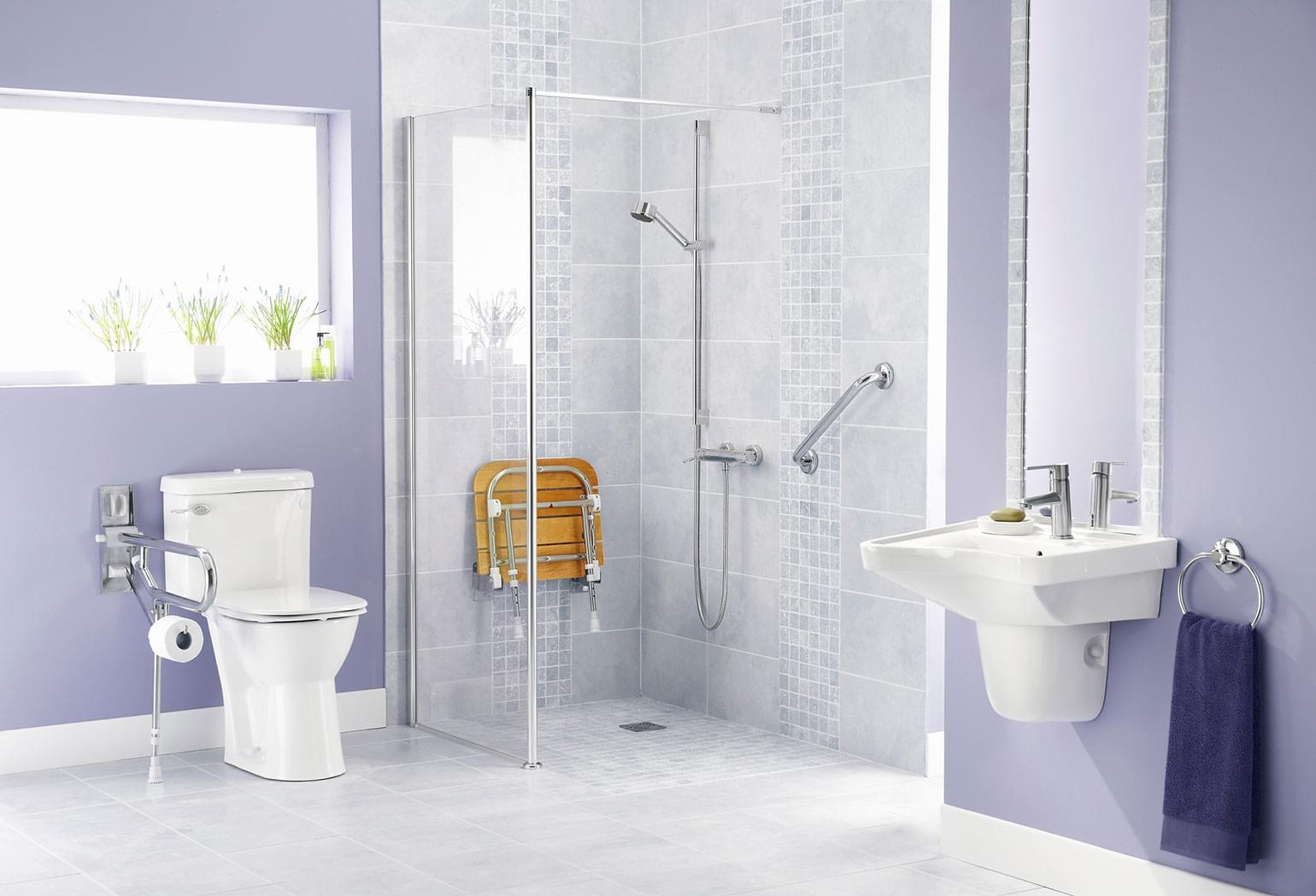Published January 5, 2018 • 4 Min Read
Five Top Renovations for Aging in Place
One Level: ASI’s top request from homeowners is eliminating stairs and barriers with one-story living. Thresholds that are flush with the floor are wheelchair-friendly, and prevent tripping. It can involve changing the dining room to the bedroom, adding an extension or building ramps. Bathroom Spa: Add grab bars and non-slip coatings to the bathtub. Or remove the tub and replace with a walk-in shower. Some plumbers and home renovators will cut the side wall of a tub so you can walk through and still utilize it as a shower. Modify or replace the vanity with a roll-under—if you are in a wheelchair, you can get right up to the sink. Replace regular toilet with a comfort height toilet. The biggest issue is having enough space for a walker or wheelchair. ASI’s solution: take out a closet in an adjacent bedroom. Wider Doorways and Hallways:
Doorways that are 32-36 inches wide let wheelchairs pass through. They also make it easy to move big things in and out of the house. Hallways should be 36-42 inches wide.
Home Automation:
Controls the environment, provides entertainment and provides safety through a variety of different sensors. You can facilitate taking care of health and safety. For example, it can detect a fall. Or say Mom leaves the stove on. Appliances and taps can be controlled—and turned off—remotely.
Knobs and Handles:
Door knobs can be hard to turn and standard switches awkward. Lever door handles and rocker light switches are great for people with poor hand strength, or when your arms are full of grocery bags.
Renovating to “age in place” and ensuring you age in the right place will mean planning ahead, but with your home modified safely and stylishly, you may also qualify for tax credits for senior-friendly home renovations while possibly adding to your home’s value.
Wider Doorways and Hallways:
Doorways that are 32-36 inches wide let wheelchairs pass through. They also make it easy to move big things in and out of the house. Hallways should be 36-42 inches wide.
Home Automation:
Controls the environment, provides entertainment and provides safety through a variety of different sensors. You can facilitate taking care of health and safety. For example, it can detect a fall. Or say Mom leaves the stove on. Appliances and taps can be controlled—and turned off—remotely.
Knobs and Handles:
Door knobs can be hard to turn and standard switches awkward. Lever door handles and rocker light switches are great for people with poor hand strength, or when your arms are full of grocery bags.
Renovating to “age in place” and ensuring you age in the right place will mean planning ahead, but with your home modified safely and stylishly, you may also qualify for tax credits for senior-friendly home renovations while possibly adding to your home’s value.
This article is intended as general information only and is not to be relied upon as constituting legal, financial or other professional advice. A professional advisor should be consulted regarding your specific situation. Information presented is believed to be factual and up-to-date but we do not guarantee its accuracy and it should not be regarded as a complete analysis of the subjects discussed. All expressions of opinion reflect the judgment of the authors as of the date of publication and are subject to change. No endorsement of any third parties or their advice, opinions, information, products or services is expressly given or implied by Royal Bank of Canada or any of its affiliates.
Share This Article






